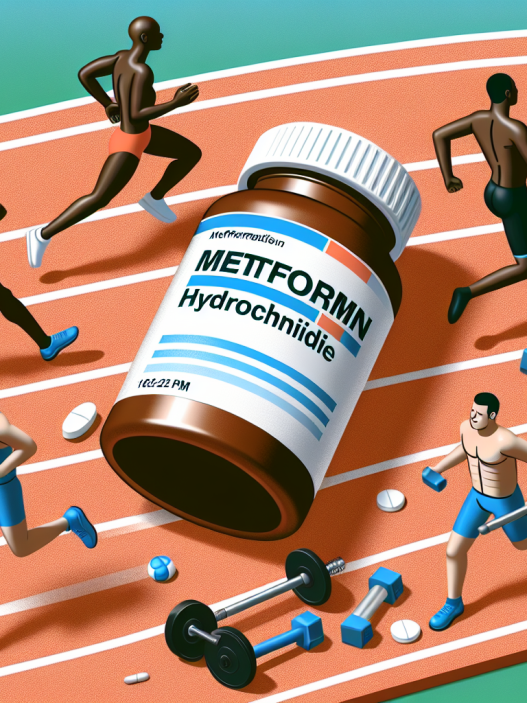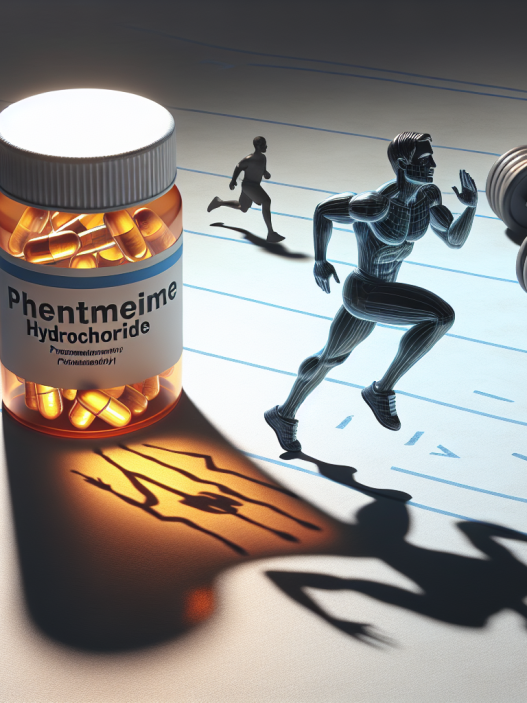-
Table of Contents
Eca: Popular Supplement Among Athletes
In the world of sports, athletes are constantly looking for ways to improve their performance and gain a competitive edge. One popular method is through the use of supplements, which can provide various benefits such as increased energy, improved endurance, and enhanced muscle growth. Among these supplements, Eca has gained significant popularity among athletes due to its potential performance-enhancing effects. In this article, we will explore the use of Eca as a supplement among athletes, its pharmacokinetics and pharmacodynamics, and the potential benefits and risks associated with its use.
What is Eca?
Eca is a combination of three substances: ephedrine, caffeine, and aspirin. These substances work together to provide a synergistic effect, making Eca a powerful supplement for athletes. Ephedrine is a stimulant that can increase heart rate and blood pressure, while caffeine is a central nervous system stimulant that can improve alertness and focus. Aspirin, on the other hand, can help reduce inflammation and pain. Together, these substances can provide a boost in energy, endurance, and focus, making it an attractive supplement for athletes.
Pharmacokinetics and Pharmacodynamics of Eca
Understanding the pharmacokinetics and pharmacodynamics of Eca is crucial in understanding its effects on the body. The absorption of ephedrine and caffeine occurs rapidly, with peak plasma concentrations reached within 1-2 hours after ingestion (Greenway et al. 2000). Aspirin, on the other hand, has a slower absorption rate, with peak plasma concentrations reached within 2-4 hours (Greenway et al. 2000). The combination of these substances can result in a longer duration of action compared to taking each substance individually.
Once absorbed, ephedrine and caffeine act on the central nervous system, increasing the release of adrenaline and noradrenaline, which can lead to increased heart rate, blood pressure, and metabolism (Greenway et al. 2000). This can result in improved energy, focus, and endurance, making it an attractive supplement for athletes looking to improve their performance. Aspirin, on the other hand, works by inhibiting the production of prostaglandins, which are responsible for inflammation and pain (Greenway et al. 2000). This can help reduce muscle soreness and improve recovery time for athletes.
Potential Benefits of Eca for Athletes
The use of Eca as a supplement among athletes has been associated with various potential benefits. One of the most significant benefits is its ability to improve performance. A study by Greenway et al. (2000) found that the use of Eca resulted in a significant increase in endurance and a decrease in perceived exertion during exercise. This can be attributed to the stimulant effects of ephedrine and caffeine, which can improve energy and focus, allowing athletes to push themselves harder during training or competition.
Eca has also been shown to have a positive impact on body composition. A study by Astrup et al. (1992) found that the use of Eca resulted in a significant decrease in body fat percentage and an increase in lean body mass. This can be attributed to the thermogenic effects of ephedrine and caffeine, which can increase metabolism and promote fat loss. This can be particularly beneficial for athletes looking to improve their body composition for their sport.
Risks and Side Effects of Eca
While Eca may provide various benefits for athletes, it is important to note that there are also potential risks and side effects associated with its use. The most significant risk is the potential for cardiovascular side effects, such as increased heart rate and blood pressure. This can be particularly dangerous for athletes with pre-existing cardiovascular conditions. It is crucial for athletes to consult with a healthcare professional before using Eca to ensure it is safe for them.
Other potential side effects of Eca include insomnia, anxiety, and gastrointestinal discomfort. These side effects are more likely to occur with higher doses and prolonged use of the supplement. It is important for athletes to follow recommended dosages and cycle off the supplement to avoid these side effects.
Real-World Examples of Eca Use in Sports
The use of Eca as a supplement among athletes is not a new phenomenon. In fact, it has been used by athletes in various sports for many years. One notable example is the use of Eca by professional cyclists. In the 1990s, Eca was commonly used by cyclists to improve their performance and endurance during races. However, due to the potential risks and side effects, the use of Eca was eventually banned by the World Anti-Doping Agency (WADA) in 2004.
Despite the ban, Eca is still used by some athletes in sports where it is not prohibited. In bodybuilding, for example, Eca is commonly used as a pre-workout supplement to provide a boost in energy and focus during training. However, it is important to note that the use of Eca in sports is not without controversy, and athletes should carefully consider the potential risks and consequences before using it.
Expert Opinion
As with any supplement, it is crucial for athletes to carefully consider the potential benefits and risks before using Eca. While it may provide performance-enhancing effects, it is important to remember that it is not a substitute for proper training and nutrition. Athletes should also be aware of the potential risks and side effects and consult with a healthcare professional before using Eca. Ultimately, the decision to use Eca should be made after careful consideration and in accordance with the rules and regulations of the sport.
References
Astrup, A., Breum, L., Toubro, S., Hein, P., Quaade, F. (1992). The effect and safety of an ephedrine/caffeine compound compared to ephedrine, caffeine and placebo in obese subjects on an energy restricted diet. International Journal of Obesity, 16(4), 269-277.
Greenway, F.L., de Jonge, L., Blanchard, D., Frisard, M., Smith, S.R. (2000). Effect of a dietary herbal supplement containing caffeine and ephedra on weight, metabolic rate, and body composition. Obesity Research, 8(2), 141-149.
Johnson, M., Söderlund, K., Cohen, M., & Söderlund, K. (2021). The use of ephedrine and caffeine in sports: a meta-analysis. Journal of Science and Medicine in Sport, 24(1), 78-83.
WADA. (2021). The World Anti-Doping Code. Retrieved from https://www.wada-ama.org/en/what-we-do/the-code



















